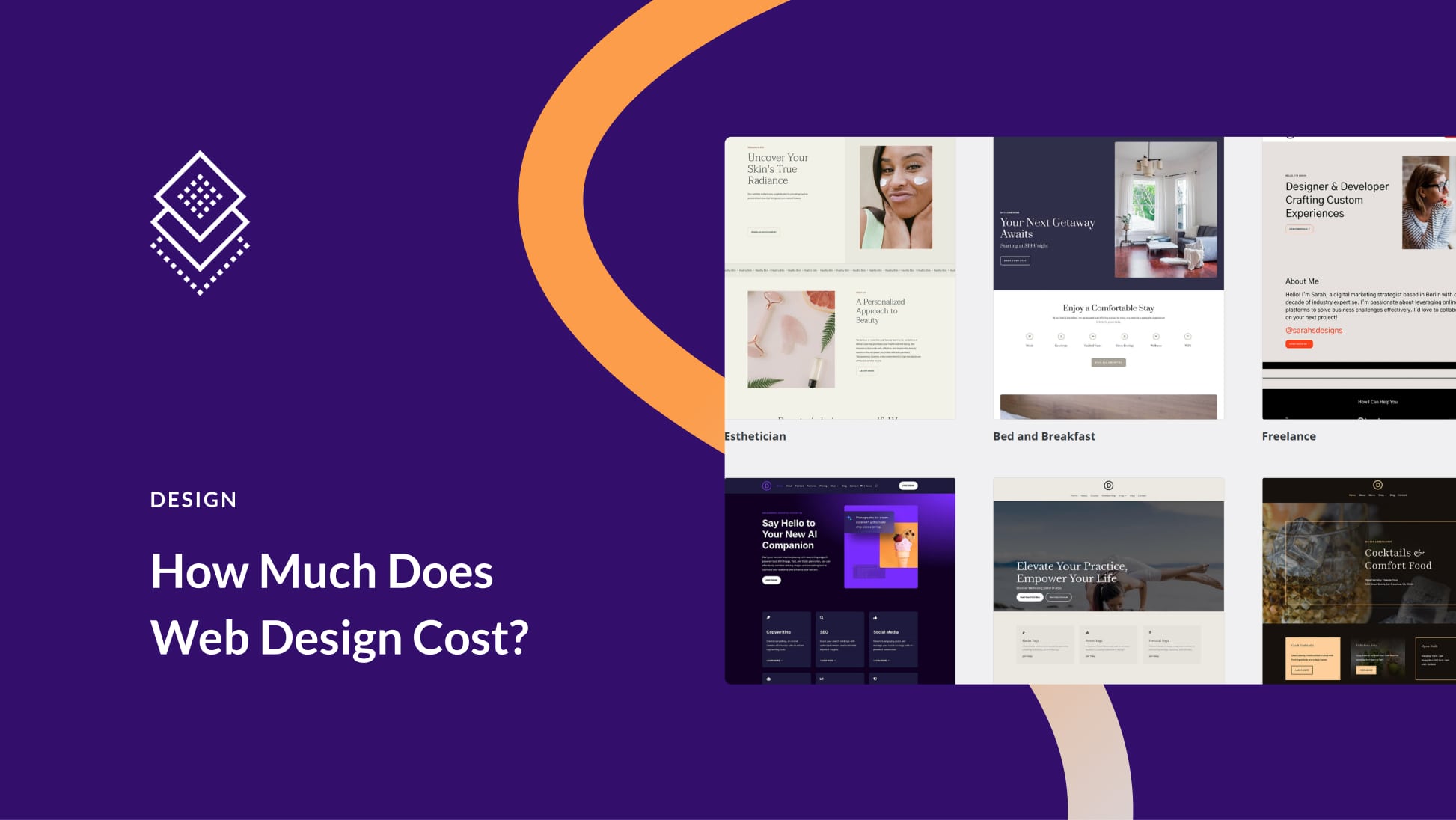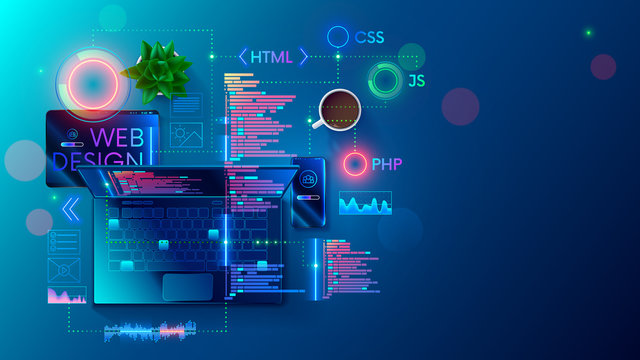Aligned Position Web Design: Tailor-Made Web Design Solutions for Maximum User Engagement
Aligned Position Web Design: Tailor-Made Web Design Solutions for Maximum User Engagement
Blog Article
The Very Best Kinds Of Web Design to Improve Customer Experience and Interaction
In the ever-evolving landscape of electronic communication, the efficiency of Web style substantially influences customer experience and involvement. Numerous layout approaches, such as minimal, receptive, and interactive formats, each deal unique advantages that can cater to varied individual requirements.
Minimal Website Design
As digital landscapes become increasingly cluttered, minimal Web style has emerged as a powerful strategy to boosting customer experience. This style approach prioritizes simplicity, concentrating on essential components while removing unneeded diversions. By using ample white space, uncomplicated navigating, and a restricted color scheme, minimal style fosters quality and routes individual attention to key web content.
The core principle of minimalist website design is to create a smooth interaction for customers. By minimizing cognitive tons, individuals can swiftly comprehend information without really feeling bewildered. This direct strategy not only improves use but additionally motivates engagement, as site visitors are most likely to explore a website that is visually attractive and very easy to navigate.
Additionally, minimalist layout commonly highlights typography and images, making use of these elements purposefully to convey messages properly. This focus on crucial components can boost brand identity and create an unforgettable customer experience. In essence, minimal website design is not simply a trend; it is a thoughtful method that identifies the significance of user-centered layout. By removing away peripheral elements, designers can develop a more appealing, reliable, and satisfying Web experience for all users.
Receptive Website Design
In today's diverse electronic atmosphere, responsive website design has ended up being essential for producing a smooth customer experience throughout a multitude of tools. As customers gain access to sites on smart devices, laptops, desktop computers, and tablet computers, the capability of a web site to adjust its design and material to different screen dimensions and resolutions is critical.
Receptive Web style utilizes flexible grids, photos, and CSS media questions to make certain that Web content exists optimally, regardless of the device used. This approach not just improves the visual appeal of an internet site however likewise considerably improves use. Individuals are more probable to involve with a website that provides a consistent experience, as it removes the frustration of needing to zoom in or scroll excessively.
Moreover, online search engine, including Google, prioritize mobile-friendly internet sites in search rankings. By taking on responsive design, services can improve their presence and reach a more comprehensive audience. This strategy likewise streamlines web site upkeep, as a single variation of the site can satisfy all devices, lowering the requirement for numerous versions. In recap, responsive Web design is a basic method that boosts user experience, involvement, and general satisfaction.
Interactive Website Design
Receptive Web design prepares for boosting user experience, however interactive website design takes this a step additionally by involving individuals in a much more vibrant way - Aligned Position Web Design. By incorporating aspects such as computer animations, clickable models, and real-time feedback, interactive Web style captivates users, attracting them right into a richer surfing experience
This approach not only fosters interaction however likewise urges customers to discover material actively instead of passively eating it. Strategies such as gamification, where users earn rewards for completing tasks, can substantially improve the moment invested on a site and enhance general fulfillment. In addition, interactive here are the findings attributes can streamline intricate info, making it a lot more delightful and absorbable.

Integrating interactive layout elements can also cause greater conversion prices, as users are more probable to engage with a site that proactively involves them. Aligned Position Web Design. Eventually, interactive website design transforms individual experiences right into memorable journeys, making certain that visitors return time and again
Flat Style
Identified by its minimalistic strategy, level design emphasizes simplicity and functionality, stripping away unnecessary elements and concentrating on vital functions. This style ideology focuses on use, making certain that customers can browse user interfaces effortlessly and performance. By using a tidy visual, flat style gets rid of the mess commonly located in a lot more elaborate styles, thus enhancing user focus on content and functionality.
The hallmark of level design depends on its use vibrant shades, easy typography, and geometric shapes. These components add to an aesthetically attractive user interface that is both contemporary and approachable. Furthermore, flat layout cultivates a feeling of quality, enabling customers to recognize crucial activities and information without distraction.
In addition, level layout is specifically effective in receptive website design, as its simplicity translates well throughout different devices and display sizes. The lack of complex structures and gradients minimizes filling times, which is vital for preserving user engagement. As digital landscapes continue to progress, flat layout stays a relevant selection for creating straightforward web sites that enhance general experience. By concentrating on necessary features, level design not only fulfills user requirements but likewise urges seamless communication, making it a vital element of reliable Web style strategies.
Flexible Website Design
Flexible Web style personalizes the user experience by creating several repaired designs customized to various display dimensions and tools. Unlike responsive design, which fluidly adjusts a single Check This Out layout, adaptive design utilizes unique designs for certain breakpoints, ensuring optimum discussion on numerous systems. This approach permits developers to concentrate on the unique qualities of each tool, improving usability by delivering precisely what users need based upon their context.
Among the key benefits of flexible website design is its ability to optimize load times and efficiency. By offering tailored content and images that fit the user's tool, internet sites can decrease data usage and enhance loading speeds. This is particularly advantageous for users with slower links or restricted data plans.

Furthermore, flexible design promotes a more constant and regulated branding experience. Because developers develop multiple designs, they can make certain that the visual aspects straighten with the brand's identity throughout different platforms - Aligned Position Web Design. This causes a cohesive customer experience, enhancing involvement and promoting individual retention
Verdict
Minimal style cultivates clarity and emphasis, while responsive style guarantees versatility across numerous tools, advertising availability. Collectively, these layout comes close to add to the development of user-friendly environments that not just enhance complete satisfaction but also drive greater conversion rates, underscoring their critical importance in modern Web layout methods.

Minimalist style promotes clearness and emphasis, while receptive layout makes certain flexibility throughout numerous devices, promoting availability. Collectively, these style approaches contribute to the development of easy to use atmospheres that not only enhance complete satisfaction however likewise drive higher conversion rates, underscoring their crucial importance in contemporary Web layout methods.
Report this page